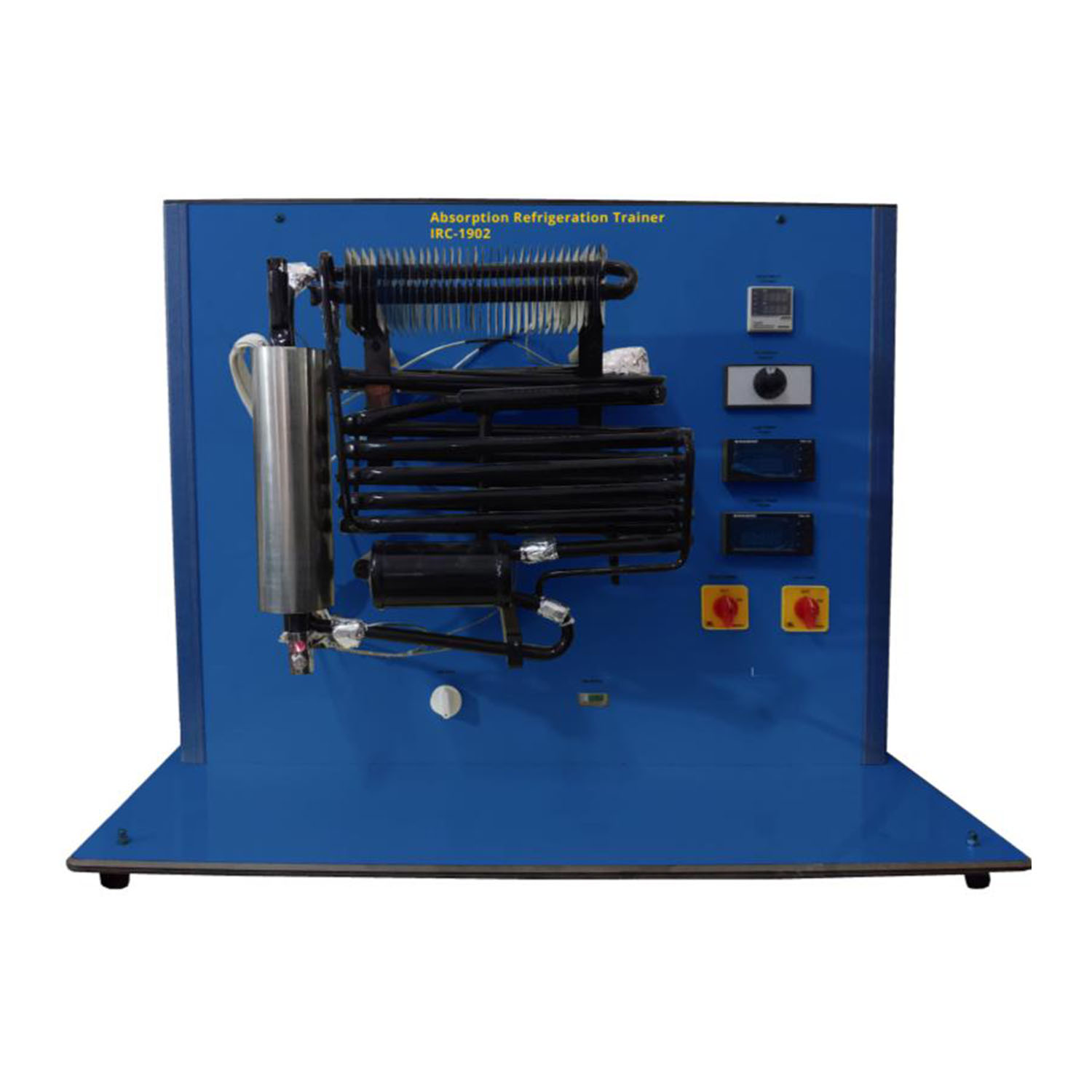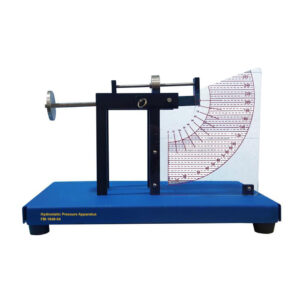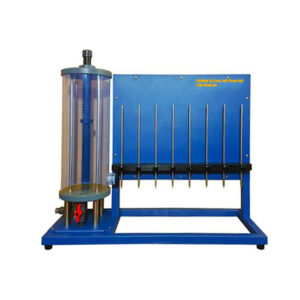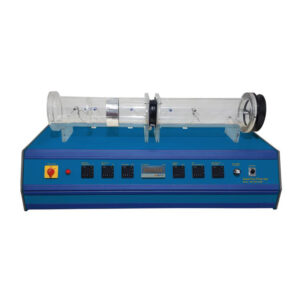Systems for absorption refrigeration run on thermal energy. They operate on the idea that when pressure is lowered, liquids begin to evaporate already at low temperatures. The experimental unit uses the example of an ammonia-water solution functioning as a refrigerant to illustrate this fundamental concept. Ammonia liquid evaporates in the evaporator, removing heat from the surrounding air. The water in the absorber absorbs the ammonia steam to reduce the evaporation pressure. The high-concentration ammonia solution is then permanently purified to prevent the absorption process from being stopped. The high concentration ammonia solution is heated in a generator for this purpose until the ammonia evaporates once again. A final stage involves returning the ammonia steam to the evaporator after it has condensed and been cooled in the condenser to the base level. The absorber receives a flow of the low concentration ammonia solution. Hydrogen is exploited as an auxiliary gas in the system to maintain the pressure differential. The generated waste heat can be implemented for cooling in systems used for process technology. The necessary heat is produced electrically or by a gas burner in small mobile devices like a camping refrigerator or a hotel minibar. The quiet functioning of absorption refrigeration systems is another advantage. The equipment uses the evaporator, absorber, boiler as a generator with a bubble pump, and condenser as its primary components to show the operation of an absorption refrigeration system. Electricity or gas can both be used to run the boiler as alternatives. The cooling load is produced by another electric heater located at the evaporator. Digital data is captured and presented for the temperatures in the refrigeration circuit as well as the heating capacity at the boiler and the evaporator. The comprehensive course materials outline the foundations and offer a step-by-step walkthrough of the experiment.
Software IRC-1902SW (optional)
DAQ software specially designed in National Instrument™, LABVIEW™ environment to measure and calculate the results of apparatus. The software is optional and while using software a set of electronic sensors are included. The software can be run with any Windows™ environment.




